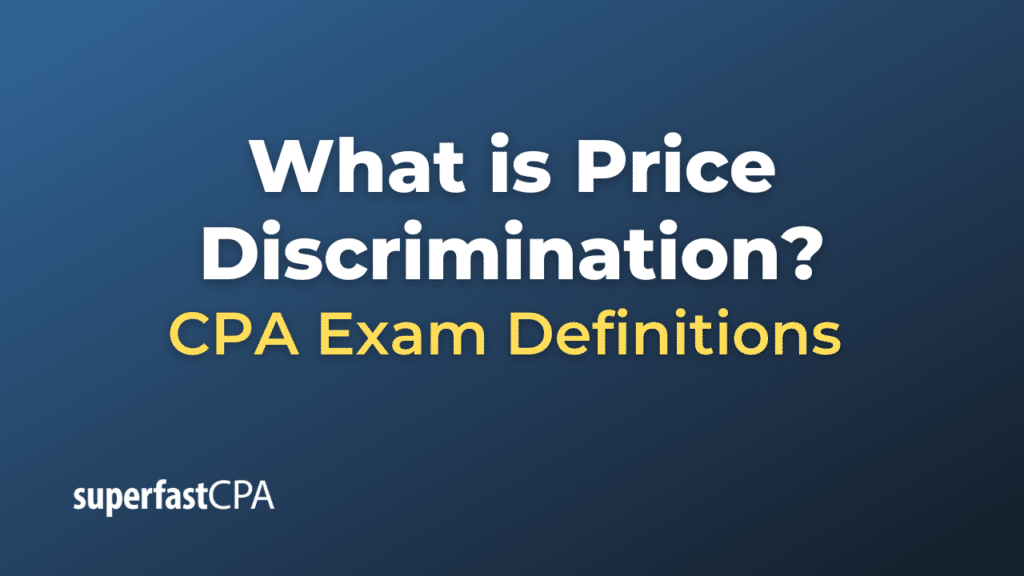Price Discrimination
Price discrimination refers to the business practice where different prices are charged to different customers or groups for the same good or service. This typically occurs when sellers have some degree of market power, and it’s often based on the maximum that individual customers are willing to pay.
There are three main types of price discrimination:
- First-degree price discrimination (or perfect price discrimination): The seller charges each customer the maximum price they are willing to pay for the product or service. This requires the seller to have perfect information about each customer’s willingness to pay.
- Second-degree price discrimination (or quantity discrimination): The price charged varies according to the quantity demanded. For example, bulk purchases might be sold at a lower unit price than single items. This does not require the seller to know anything about the buyer’s willingness to pay.
- Third-degree price discrimination: The seller charges different prices to different groups of consumers, often segmented by factors like location, age, gender, or income. For instance, movie theaters often charge lower prices for students, seniors, or matinee showings.
It’s important to note that price discrimination is not always illegal or unethical. For instance, discounts offered to students or seniors can be seen as socially beneficial. However, in some cases, price discrimination can lead to unequal outcomes that may be considered unfair, and some forms of price discrimination may be illegal under competition or antitrust laws in certain jurisdictions.
Example of Price Discrimination
Let’s consider a real-world example for each type of price discrimination:
- First-degree price discrimination: An example of first-degree price discrimination could be a car dealership. When you walk into a dealership, the salesperson might try to assess how much you’re willing to pay for a car based on factors such as your appearance, the car you currently drive, or how you negotiate. The dealer’s goal is to charge you the maximum price that you’re willing to pay. This is a form of first-degree price discrimination.
- Second-degree price discrimination: An example of this can be seen with bulk purchases at a store like Costco. If you buy one roll of paper towels, you might pay $2, but if you buy a pack of twelve, you might pay $15, significantly less per roll. The price per unit decreases as the number of units purchased increases, demonstrating second-degree price discrimination.
- Third-degree price discrimination: An example of third-degree price discrimination is a movie theater offering discounted tickets to seniors or students. Here, the theater is segmenting its market into different groups (seniors, students, and regular adults) and charging each group a different price.
Remember, price discrimination is not always illegal or unethical, especially when it allows different groups of consumers to have access to goods or services they might otherwise not afford. However, it can also lead to situations where customers feel they are being unfairly treated based on their willingness or ability to pay.













